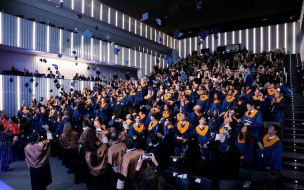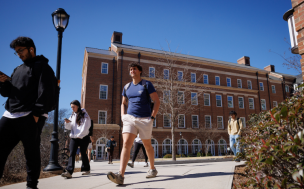Leading the way globally is the Wharton School at the University of Pennsylvania, followed by MIT Sloan School of Management and London Business School.
Read ‘The 10 Best EMBA Programs In The World—According To QS’
Alex Chisholm, head of business school analytics at QS, said: "More than 100 executive MBA programs from around the world participated in the 2018 QS EMBA Rankings. These globally recognized business schools have together produced more than 100,000 EMBA graduates over the years.
"Many EMBA candidates evaluate local options or identify flexible programs to fit within their existing commitments to work and family. These rankings, and the targeted regional tables QS has constructed, can hopefully help them as they navigate this process."
Here are five key takeaways from this year's EMBA ranking:
1. Business schools are making their EMBA programs more accessible
Taking on an executive MBA, in addition to the pre-existing demands of work and family, can often be one burden too many for students (there's a reason the EMBA is referred to as the 'divorce course').
Fortunately, business schools seem aware of this, in particular the way it affects the number of female students who apply for executive MBA programs and are seeking to make amends.
Alex Chisholm says: "Flexibility is increasingly a theme this year. Around 40% of the EMBA programs we collaborated with for this ranking offer EMBA candidates varying lengths of time requirements to complete the program on their own terms."
Flexibility goes beyond just making it easier to fit the classes around your lifestyle though. Two out of three programs this year also give students choices in what classes or specializations they can focus on during the program.
2. Interest in the executive MBA is booming
Forget the naysayers, the executive MBA (much like the full-time MBA) is very much alive and kicking, while fewer people are taking part-time MBAs.
Alex says: "Although global demand for EMBA programs has been mixed in recent years, we found that more than 50% of programs reported receiving more applications in the most recent application cycle than they did the year prior."
Schools will be hopeful that this continues in the future, especially with efforts being made to make EMBA programs more flexible.
3. The best EMBA in the Asia-Pacific is based in... Chicago?
At first glance, the fact that the University of Chicago Booth School of Business is the top-ranked executive MBA program in the Asia-Pacific region looks like a mistake. Chicago, after all, is not in Asia.
However, the reason Chicago tops the Asia-Pacific ranking is because the school offers a Hong Kong-based EMBA program, in addition to teaching on its campuses in Chicago and London. This means that Booth is able to feature in three different regional rankings.
4. The top joint EMBA program spans three continents
The number one joint EMBA program this year is offered by Columbia, the University of Hong Kong and LBS, and spans three continents, with students able to study at some of the best business schools in the world. Perfect for any globetrotters out there!
5. The average EMBA class has extensive work experience
Unlike the full-time MBA, the executive MBA is largely targeted at members of senior management who are looking to gain additional knowledge and skills to help advance their careers. This difference in focus is reflected in the average class composition on top EMBA programs.
Alex says: “An Executive MBA is a great path for people who are already established in their professional careers and who want to gain the knowledge and perspective to become even more impactful leaders within their organizations.
"Among schools participating in this year’s ranking, the typical EMBA student boasts 14 years of professional work experience, nine of which include managerial responsibilities. On average, schools reported that 28% of their classes are composed of c-suite executives.”
Want to learn more about this year's EMBA Rankings 2018? Click here to discover the tables in full.
RECAPTHA :
e5
2b
e5
38







